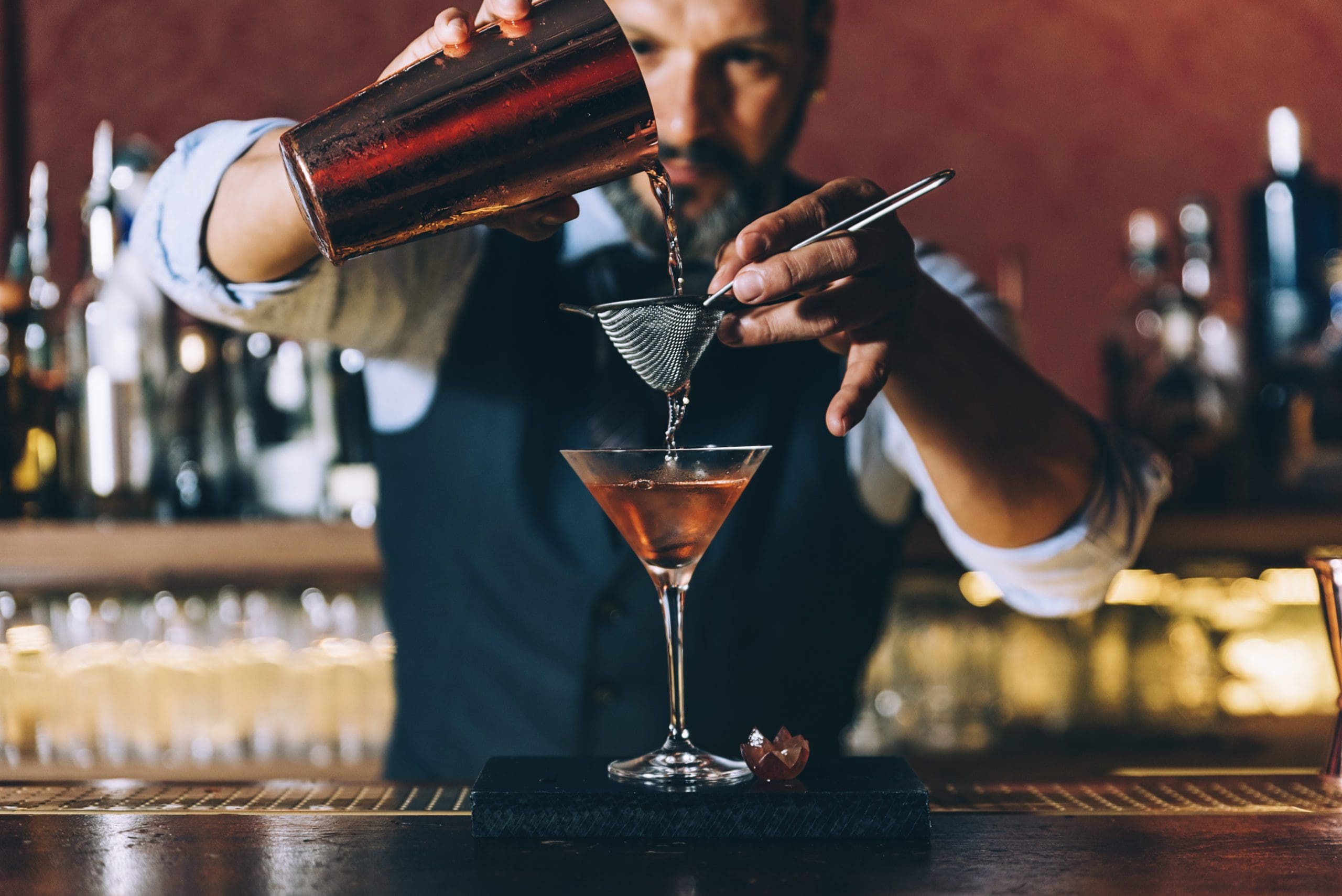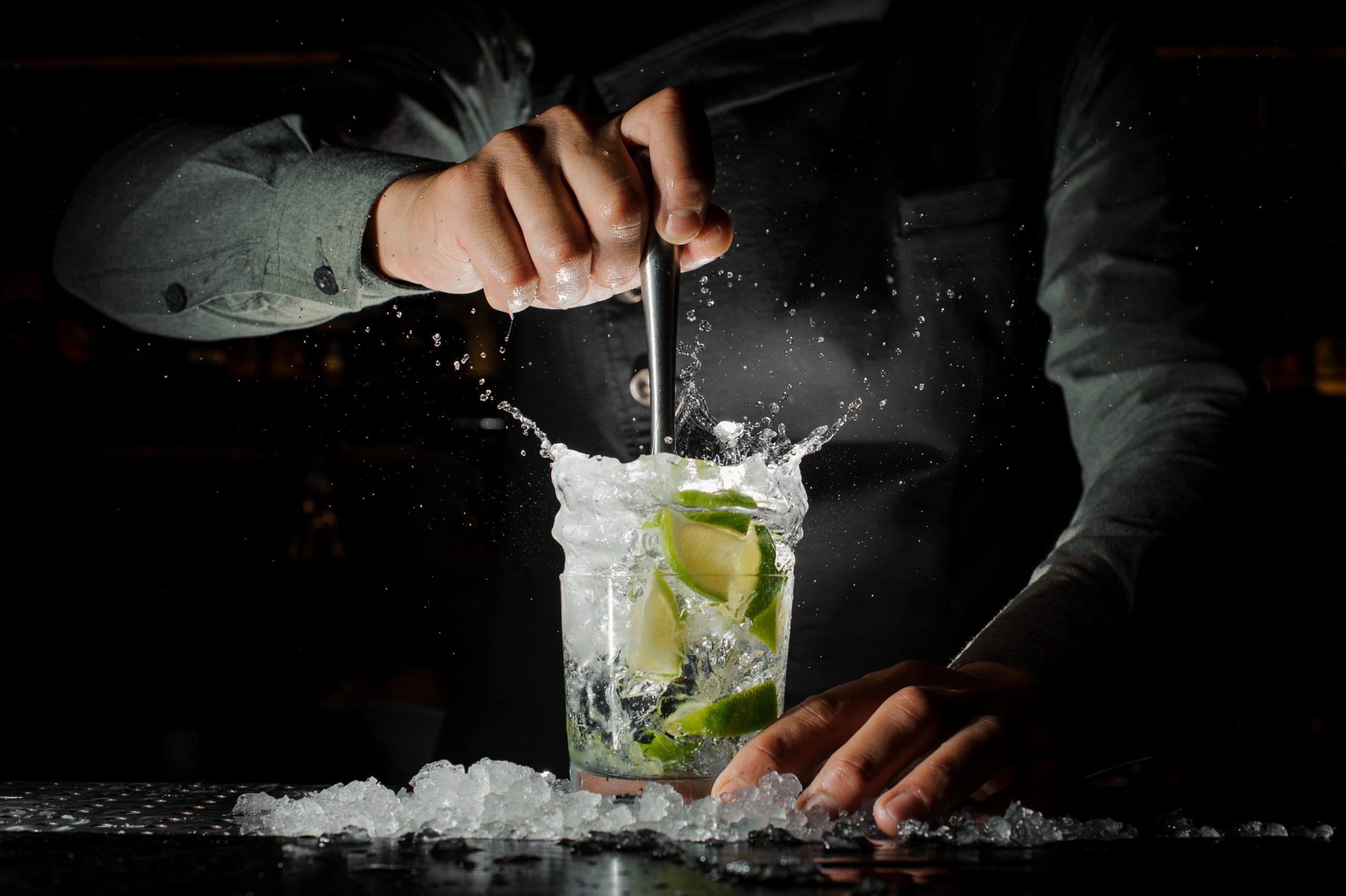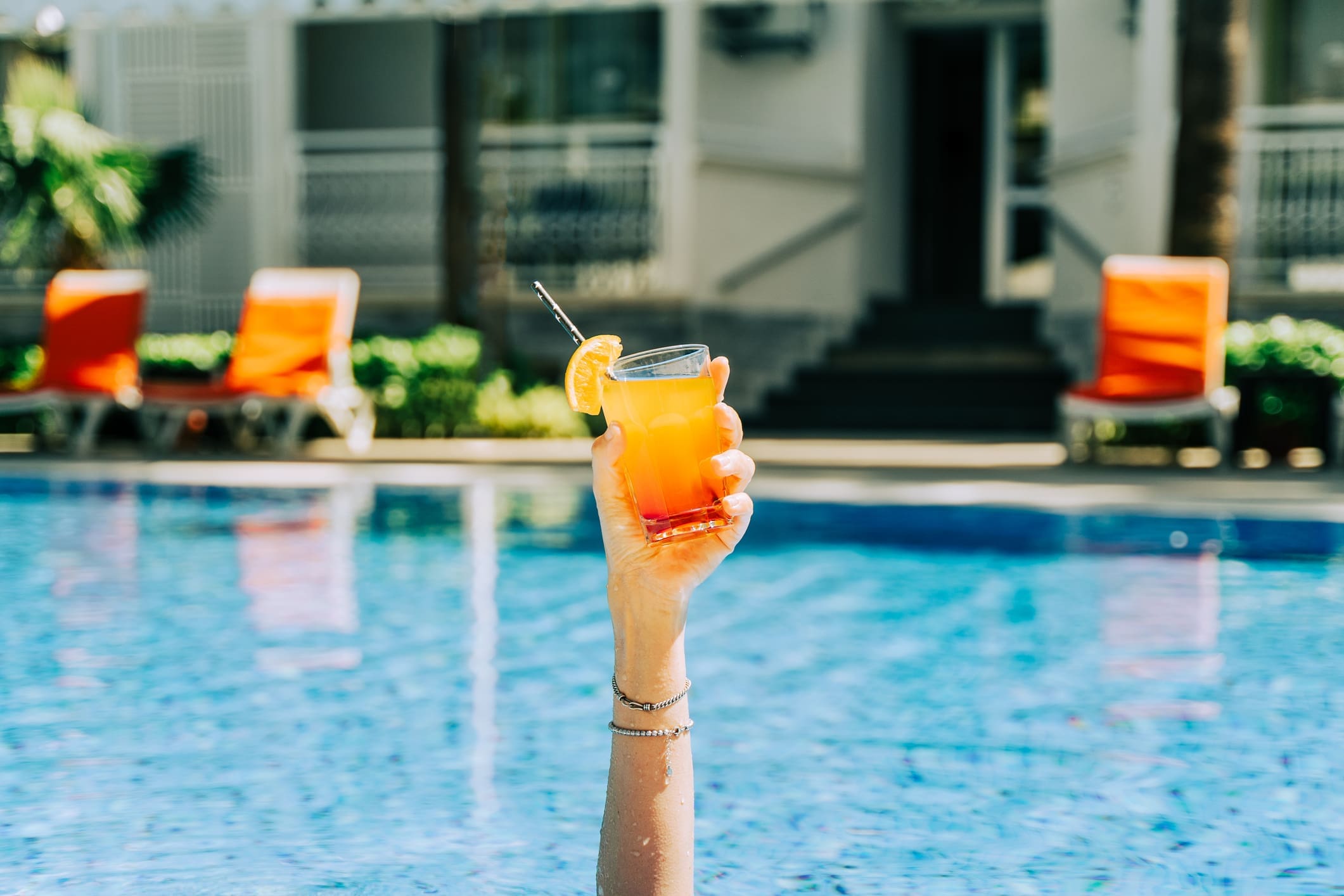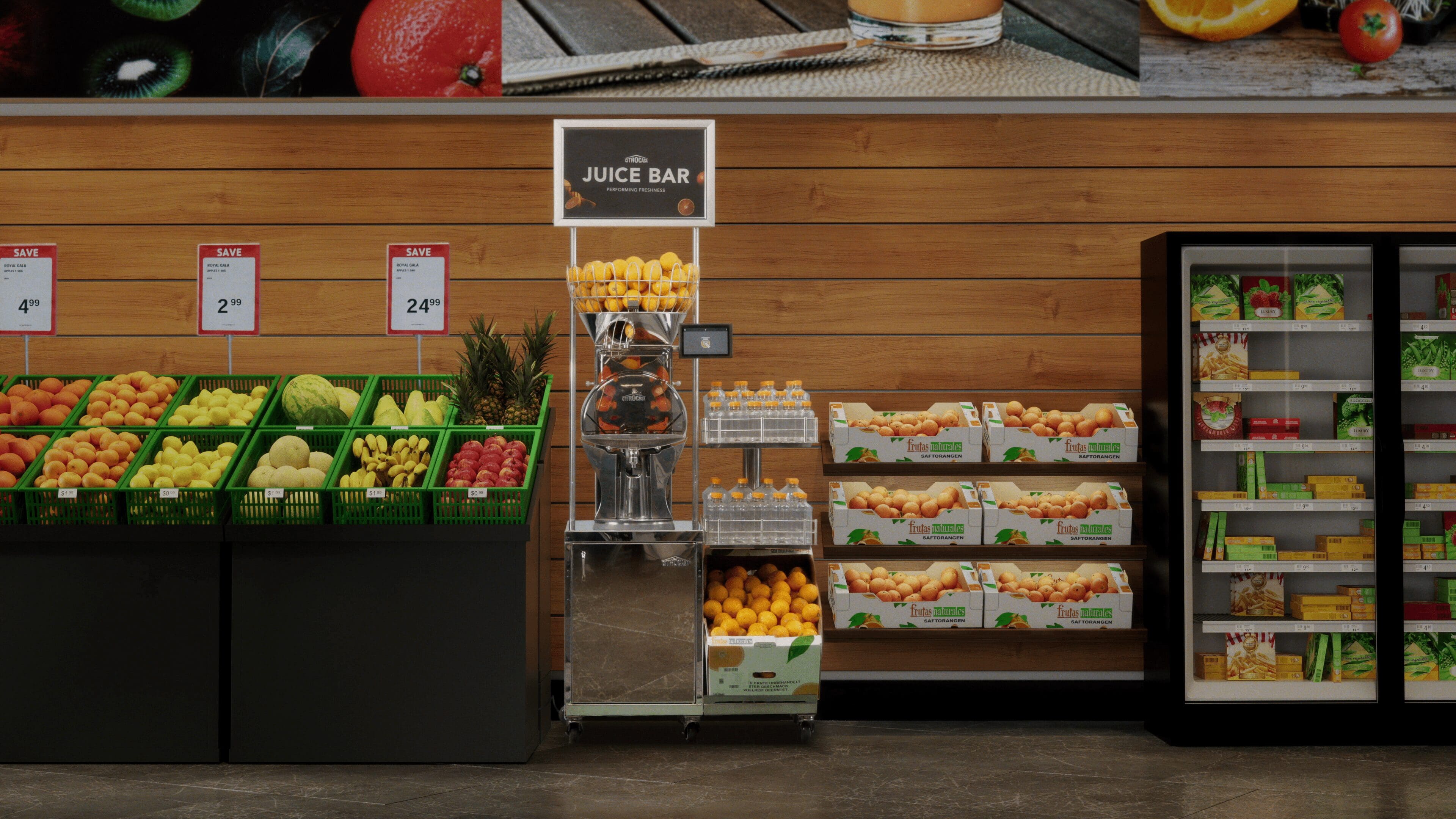5 Ways to Keep Your Bartending Staff Safe and
Improve Bottom Line Profitability
Bartenders play an important role in the success of any bar or restaurant. With that first round of drinks they prepare, they set the mood for the evening. And if they are really good at what they do, they’ll enhance the guest experience and keep your guests coming back for more. So, keeping your bar staff safe is a win-win-win, a triple-win, for everybody: your staff, your customers, and you, the owner-operator.
MIXING UP A GREAT EXPERIENCE
When we walk into a bar or restaurant our entire experience, good or bad, is driven by people. A great bar or restaurant experience is like a well-choreographed ballet, musical, or a sports team. Different performers or athletes are on the stage or field at different times, supported by plenty of behind-the-scenes players that help create the magic. Athletes, dancers, actors and supporting staff: all have to deliver performance when the curtain is drawn or the whistle blows.
Your bar staff plays a critical role in a guest’s experience. A drink, alcoholic or non-alcoholic, is usually the first item a customer orders and receives. There are attractive profit margins to be earned at the bar and it’s also a great opportunity to make a powerful first impression.
A smart beverage strategy and an efficiently run bar will meet client demand and drastically cut wait times for your guests. And the swift delivery of a perfectly poured or crafted beverage will create a positive and welcoming mood.
TURNING CUSTOMERS INTO REGULARS
A great experience brings back customers. It can turn them into regulars. Guests return because they know and like the staff. And they return because the staff anticipates and responds to their needs.
According to Deloitte, “60 percent of guests said a positive experience will cause them to dine at the restaurant more frequently.”
- Engage me. Interact with me in a friendly, authentic way. Be hospitable and genuine with me. Treat me as a person.
- Empower me. Give me the ability to customize to my specific needs. Value my feedback and respond in an appropriate way.
- Hear me. Demonstrate awareness of the situation and acknowledge my needs. Listen to my unique needs.
- Delight me. Create moments beyond my expectations that I will remember and share. Personalize my experience.
- Know me. Remember me and my preferences. Anticipate my changing needs.
Source: Deloitte
Having bar staff that knows the restaurant, knows the recipes, knows the clientele, and can provide a high level of customer service is important for operational success. There are direct and indirect benefits to keeping your staff safe and healthy, which we will talk about later in this blog.
THE MIXOLOGY EXPERIENCE
Your bartenders and bar staff are able to create a unique experience for your guests. In many establishments, bartending is much more than pouring drinks. Bartenders can be mixologists, stage performers, or both.
Mixology is both an art and a science. It provides a visual, olfactory, tactile, and flavor experience: see it, smell it, touch it, taste it. Some mixologists go to great lengths to create genuinely unique masterpieces. Experienced bartenders and trained mixologists can both bring in the mixology experience.

In addition to providing outstanding service and creating excellent drinks, bartenders are frequently also expected to “put on a show” to enhance customer experience. A variety of cocktail preparation techniques, such as mixing, shaking, or flaming, are like visual stimuli that heighten the customer’s anticipation.
The different techniques are not just for show, though. They are designed to enhance the beverage’s flavor. For example, freshly squeezed juices will yield much better flavors than juices out of a package. Smoking will add additional layers of flavor and bring out notes that would otherwise not be noticeable. Fresh herbs add aroma and a floral look.
The physical actions involved in preparing outstanding beverages require highly repetitive motions and bear several risks. Cutting and squeezing fresh fruit, making fruit peel twists, shaking the mixes – these are just some of the techniques that bring out the best flavors in drinks. At the same time, they can lead to cuts and burns. And repeating these techniques over days, weeks, months, and years can result in a range of repetitive motion injuries (RMI).
BARTENDING IS A CONTACT SPORT
Bartenders and mixologists are in constant contact with a lot of different tools, products, and ingredients. They are also constantly in contact with customers, listening, chatting, creating connections – and making sure they are happy. Bartending is a physically demanding contact sport. Unfortunately, just like in sports, the physical demands can take their toll.
We at Citrus America attend many trade shows and industry events around the country every year. And we meet many career bartenders and mixologists. Quite a few have shared their stories with us: unsafe environments, highly repetitive tasks, and numerous injuries. Some are dealing with career-specific occupational injuries even after they’ve quit active bartending.
But just like athletes love their sports despite the risks, many bartenders are passionate about their careers. They love the interaction with their customers, the opportunity to be creative, and the challenge of inventing new liquid masterpieces. And they understand that they are a key element in a bar or restaurant’s success. So, it makes sense to develop wellness strategies that help them stay safe, healthy, and fit, so they can perform at their best.
MAIN SAFETY ISSUES FOR BARTENDERS
According to Kimber Divincenzo, an occupational athletic trainer at Work-Fit.com, “Safety is paramount in many professions but it’s often overlooked behind the bar.” Surprising, isn’t it? Especially when we consider the key role bartenders play in a venue’s success and profitability.
- Slippery floors due to drips and spills
- Uneven floors, including drains, door stops, cracks in tiles and cement
- Staircases, ladders, step stools required to reach storage spaces
- Heavy lifting and risky reaches
- Swinging doors and open drawers
- Dangerous and malfunctioning equipment
- Unsafe electrical environment
- Noise levels
- Harmful chemicals for cleaning, sanitizing, and food processing
- Repetitive motions, such as cutting, pouring, shaking, lifting, and squeezing
These unsafe situations may cause a wide range of injuries.
MARGARITA BURNS AND WRIST TENDONITIS
The article 3 Occupational Health Hazards Of Bartending: ‘Margarita Burn,’ Carpal Tunnel, And Bad Knees describes some of the major risks for bartenders. Apart from common cuts from broken glass or sharp knives, there are more severe injuries that result from repetitive motions. Some common ones are tennis elbow, wrist stress, bursitis, carpal tunnel syndrome, and tendonitis.
One injury highlighted in the article is called “margarita burn”. Margarita burn can happen when a bartender squeezes large amounts of limes. The juice and oil from the limes contains photosensitizers. These chemicals can make the skin hypersensitive to sunlight and cause redness, swelling, and fluid-filled blisters.
In her blog, IS BARTENDING BAD FOR YOUR HEALTH?, Julia Tunstall, the co-founder of A Bar Above, also talks about the danger of repetitive motions.“Bartenders have been suffering from repetitive stress injuries for as long as bartending has been a profession. The constant use of your hands for pouring, shaking, chopping, muddling, and tapping can create a lot of stress in your tendons and joints.” In addition to that, there are the risks associated with heavy lifting, cutting produce, walking across wet floors, and handling glasses and glass bottles.

In her article “Overused Wrists” Dr. Karena Wu, a practicing physical therapist, describes the case of a dancer and part-time bartender who was using a manual juice press to squeeze fresh limes. She was diagnosed with wrist tendonitis, which involves pain, inflammation, and swelling around the wrist.
All of these injuries can potentially mean time off work.
“For the estimated 12.3 million food service workers in the U.S., repetitive movements, standing in one place for long periods, awkward postures, or improperly designed workstations and equipment lead to a higher risk of injuries. Musculoskeletal injuries -- conditions that affect the body's muscles, joints, tendons, ligaments, and nerves -- accounted for $124.1 million in paid losses in the food services industry from 2013 to 2017.”
(Source: TDI Safety @ Work)
MENTAL HEALTH
Bartending does not just have high physical demands. Bartenders are also exposed to factors that can contribute to mental stress. Here are a few common ones:
- High turnover and understaffing can create job pressures, such as pulling double shifts.
- Changing shift work and long hours can cause sleep issues.
- Readily available alcohol and/or drugs can cause chemical addiction.
- Listening to everyone else’s problems, part of a bartender’s informal job description, puts a burden on the bartender’s own mental health.
- Physical injuries can spill over into mental health issues.
SAFETY - A WIN-WIN FOR ALL
Front line workers, such as bartenders and barbacks have a direct and immediate impact on customer experience. Their safety and health directly and positively impact your bar or restaurant’s financial success.
“Keeping bartenders safe and injury-free is essential not only for the employee but for the bar or restaurant's profitability. When an injured bartender cannot work, regular customers who often have a favorite mixologist may take their business to a competitor. Also, the possibility of lawsuits can lead to financial losses if the work environment is unsafe.”
(Source: TDI Safety @ Work)
STAFF TURNOVER
According to the National Restaurant Association’s (NRA) 2022 Report, approximately 50% of all full-service, quick-service, and fast-casual restaurants expect employee hiring and retention to be their “top challenge in 2022”. Staff turnover is expensive. According to Decision Logic’s blog, The Real Cost of Restaurant Employee Turnover, front-line employee turnover costs a business $5,864 per impacted position. Apart from that, staff turnover has costs that are harder to measure in numbers, such as aggravating your customers.
This is clearly a significant issue that restaurants and bars need to address. There are many factors contributing to high staff turnover in the industry. And there are many ‘retention strategies’ that go way beyond the scope of this blog. Supporting your staff’s safety and health should be one of them.
5 WAYS TO KEEP YOUR BAR STAFF SAFE
So how can you create a safe environment for your bar staff? You have probably already invested in non-slip/anti-fatigue matts, first aid kits, and other basic safety equipment. In addition to that, you can easily implement a few strategies to help reduce the risk of workplace injuries.
- Perform periodic safety audits (at least annually) to review processes, infrastructure, ergonomics, and equipment. Make improvements where necessary. Track workplace injuries on regular basis.
- Invest in proper equipment to help staff get the job done safely and efficiently. Automate certain tasks to reduce highly repetitive motions.
- Implement safety training programs. Train employees on the right techniques for cutting, lifting, and handling tools to avoid injuries. Train employees on techniques to reduce repetitive motions.
- Leverage OSHA, insurance, and other partner know-how for efficient, cost-effective ideas and solutions. Make mental health resources available to your staff.
- Encourage employee self-education on self-care and fitness. Tune in to your employees’ concerns and provide support.
TIP: check with your CPA for beneficial tax treatment for additional incentives.
YOU’RE A BARTENDER – WHAT CAN YOU DO TO STAY SAFE?
As a bartender or employee working in and around the bar, you can take steps to reduce your risk of injuries.
- Training: Participate in workplace training programs offered through your employer. Find out about industry memberships and/or guilds that offer training programs.
- Equipment: Take good care of the equipment you use, keep blades sharp, and/or use your own bar tools to reduce the risk of injury. Wear the proper footwear to help minimize slips and falls and reduce fatigue.
- Fitness: Develop a targeted exercise and fitness program for your off-hours. Develop a pre-shift stretching program that addresses the tasks you anticipate doing and a post-shift exercise program that targets risk areas, similar to an athlete warming up and cooling down.
- Communication: Communicate with your employer about risks, such as worn equipment, dangerous work conditions, or highly repetitive tasks that could be reduced or automated. Share your ideas to help improve the business!
EQUIPMENT TO REDUCE REPETITIVE STRAIN
There are a wide range of special ingredients required to make outstanding alcoholic and non-alcoholic cocktails. Different ingredients and tasks have different challenges.
Citrus juices are a common ingredient in many cocktail and mocktail recipes. Just think of some of the most popular drinks: margaritas, cosmopolitans, mimosas, mules, hurricanes to name just a few. They all need citrus juices. Using freshly squeezed juices will add that superior flavor many guests expect. Recipes calling for orange juice, lime juice, lemon juice, tangerines, or pomegranate juice can all be made better when squeezing fresh.
But the physical stresses from manually cutting and squeezing citrus are serious. They affect your shoulders, arms, wrists, and hands. Whether the motions involve repeated downward pressure of the arm or twisting of the wrist, when done over a period of time, they can lead to serious injuries. They can even put a bartender out of work.
Automating the juicing process can help reduce such injuries. Apart from keeping your bar staff safe, automatic juicers will speed up the preparation process dramatically, saving valuable labor time. They will not wear out your bar staff. They are highly efficient and can improve employee satisfaction.
Happier, healthier, and productive bartenders serving high quality beverages and providing outstanding customer experiences should flow directly to the bottom line.
HOW CITRUS AMERICA CAN HELP SUPPORT HEALTHY PROFITS
Citrus America’s vision is to help change the way American’s enjoy citrus juice. We help our customers earn Healthy Profits from juicing. In the bar & restaurant industry, there are many beverage and cocktail recipes that call for citrus juice, and as we always say, “Fresh is best.”
There are many reasons why freshly squeezed citrus juice tastes so great. (CLICK HERE to read why Freshly Squeezed Orange Juice Tastes so Good) So if your operation is serving fresh breakfast, making mimosas, mixing cocktails with fresh orange juice, preparing lemonade, or just plain serving the best orange juice you can, then squeezing fresh juice is the way to go.
Citrus America, Inc. helps bars, restaurants, and cafés implement highly successful and profitable juicing programs. Investing in a high quality commercial citrus juicer is a great investment with a fast Return on Investment (ROI) and a positive impact on your business. We help customers implement fresh juice strategies that save up to 80% off of labor and dramatically increase worker safety, while continuing to surprise and delight the end-consumer with amazing products and experiences.
Citrus America also helps customers that are new to juicing. We’ve worked with mixologists, bartenders, and chefs to help enhance recipes and develop menu ideas that deliver the best flavors. We help customers implement programs that dramatically increase the quality of product being served while helping to generate more profits. Click HERE to learn more about selecting the right commercial juicing equipment.
SUMMARY
Bartenders, mixologists, and bar staff play an important role in delivering outstanding bar and restaurant experiences to the consumer. An excellent bar team and great products can support a restaurant’s brand image and help attract repeat customers, which drives top-line and bottom-line growth.
Bartending is a full contact sport. Safety and wellness for bar-related staff is frequently overlooked, which can lead to increased injuries, lost work time, increased expenses, higher business risk, employee morale issues, and higher employee turnover.
The food service industry has been negatively impacted by employee turnover and retention issues. Many of these challenges are expected to continue into the future. Developing strategies to reduce employee turnover is good for business. Safety and wellness programs are one way to help increase employee retention and reduce employee turnover.
Developing strategies that improve bartender safety and wellness should have a direct and positive impact on bottom-line profits for bars & restaurants. Developing smart strategies in this area can be a real ‘triple win’ strategy: for the restaurant, the consumer, and the employee.
About Citrus America – Citrus America has been driving innovation and quality in the juicing segment for more than a decade in North America and the Caribbean. We’re the exclusive master distributor for Citrocasa and have driven many innovations and quality improvements in juicing equipment. In addition to equipment solutions, we provide tailored training and support strategies to help our customers earn Healthy Profits.
About Citrocasa – Citrocasa has been the pioneer in producing the most innovative and highest quality food grade stainless steel commercial citrus juicing equipment to the grocery, hotel and restaurant since 2005 across Europe. The Citrocasa 8000 Series was launched in 2005, with the 8000XB and the 8000SB. The 8000SB-ATS was launched in 2013. The Citrocasa Fantastic Series was launched in 2010 with the Fantastic M/AS. The Fantastic F/SB followed in 2011.









